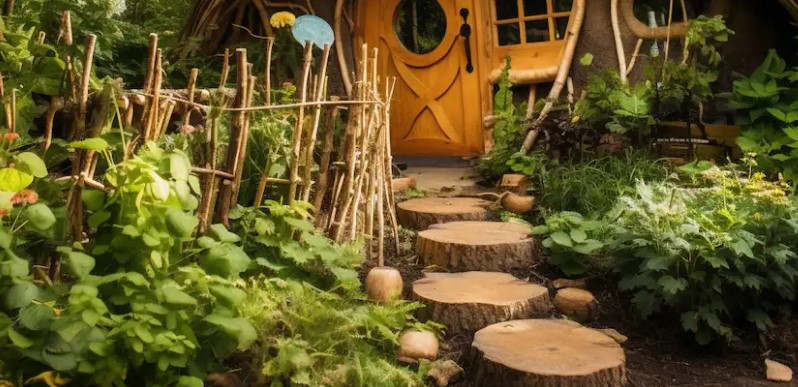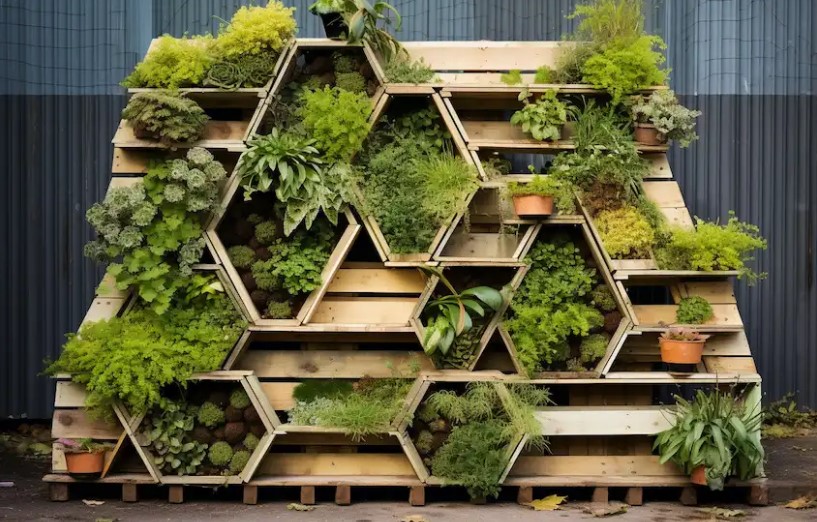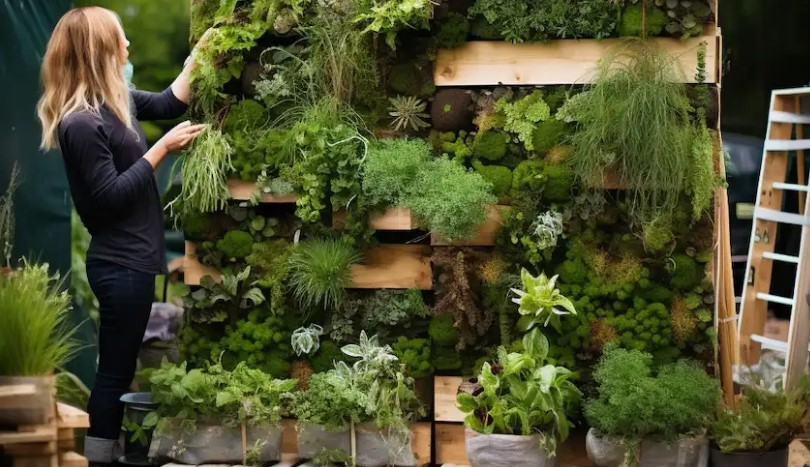Gardeners who care about sustainability are always on the lookout for new methods to grow thriving gardens while reducing their impact on the environment. Hugelkultur, a permaculture technique from Germany, has become increasingly popular for its sustainability and benefits. In this article, we’ll explore Hugelkultur, its origins, principles, and the many advantages it offers both gardeners and the environment. Plus, we’ll give you a step-by-step guide to creating your Hugelkultur garden.

I. Understanding Hugelkultur:
- Origins and Philosophy:
Hugelkultur, which translates to “hill culture” in German, was developed in Eastern Europe and has been used for centuries. The technique involves creating raised garden beds by layering organic materials such as logs, branches, leaves, and compost. These materials gradually break down, providing a sustainable source of nutrients to your plants. - Sustainable Gardening:
Hugelkultur embodies the principles of sustainability by recycling waste materials and reducing the need for external inputs like synthetic fertilizers. It mimics natural processes, allowing gardeners to work with the land rather than against it.
II. Benefits of Hugelkultur:
- Improved Soil Fertility:
As the organic materials in your Hugelkultur bed decompose, they release nutrients into the soil, creating a nutrient-rich environment for plants. This leads to healthier and more productive gardens. - Enhanced Water Retention:
Hugelkultur beds act like sponges, absorbing and retaining moisture. This reduces the frequency of watering and helps plants survive during dry spells. - Minimal Weeding:
The raised nature of Hugelkultur beds makes it harder for weeds to establish themselves, reducing the need for constant weeding and maintenance. - Extended Growing Seasons:
Hugelkultur beds can regulate temperature, allowing for longer growing seasons, particularly in colder climates. This can help you grow a wider variety of crops throughout the year. - Carbon Sequestration:
The decomposition of organic matter in Hugelkultur beds sequesters carbon in the soil, contributing to mitigating climate change.
III. Creating Your Hugelkultur Garden:
Now, let’s take a step-by-step approach to building your Hugelkultur garden.

Materials Needed:
- Logs and branches
- Leaves and grass clippings
- Compost
- Soil
- Mulch
- Gardening tools
Step 1: Choose Your Location
Select a sunny spot for your Hugelkultur bed, ensuring it receives at least 6-8 hours of sunlight daily.
Step 2: Dig a Trench
Dig a trench roughly 1-2 feet deep, depending on your preferences and available materials.
Step 3: Add Logs and Branches
Fill the trench with logs and branches. Larger pieces should go at the bottom for stability.
Step 4: Layer Organic Materials
On top of the logs and branches, add a layer of leaves, grass clippings, and other organic matter.
Step 5: Compost and Soil
Add a layer of compost and soil on top of the organic materials. You can also mix in some aged manure for additional nutrients.
Step 6: Plant Your Garden
Plant your seeds or seedlings directly into the Hugelkultur bed. Ensure they have enough space to grow and access to sunlight.
Step 7: Mulch and Water
Cover the bed with mulch to retain moisture and reduce weed growth. Water thoroughly to help settle the materials.
Step 8: Maintain Your Garden
Regularly monitor your Hugelkultur bed, ensuring it remains adequately hydrated. Over time, you may need to add more mulch or compost to maintain fertility.

Hugelkultur represents a remarkable sustainable gardening method that not only benefits your plants but also contributes positively to the environment. By recycling organic materials and mimicking natural processes, you can create a garden that thrives with minimal effort and resources. Embrace the Hugelkultur revolution and enjoy the many rewards it has to offer for both your garden and the planet.